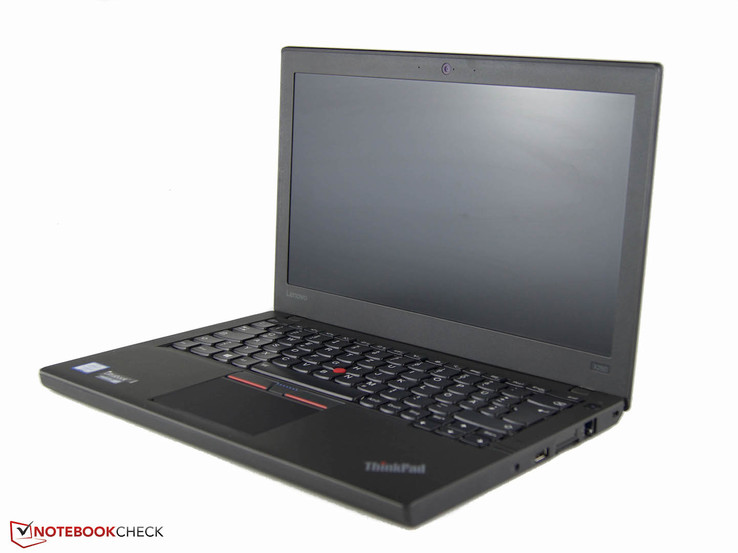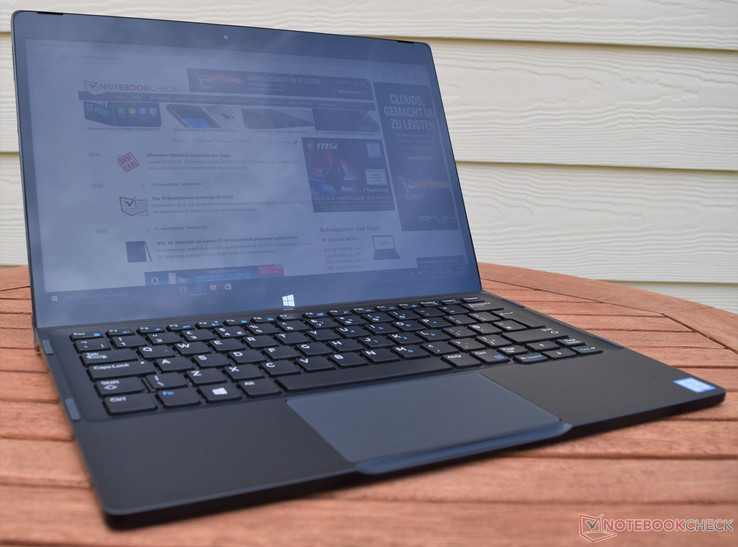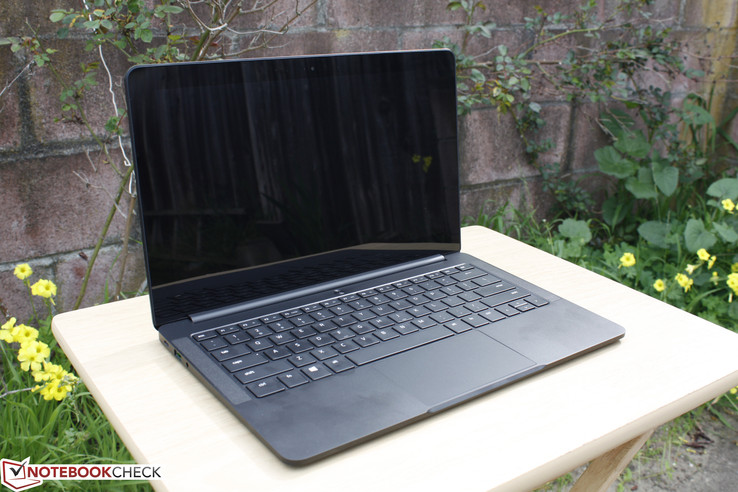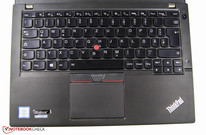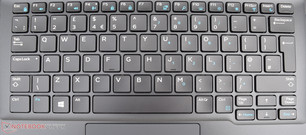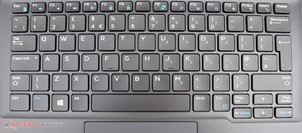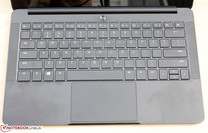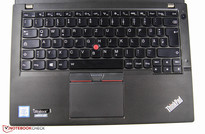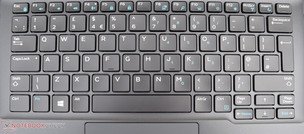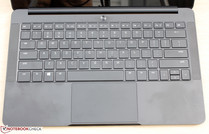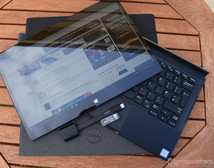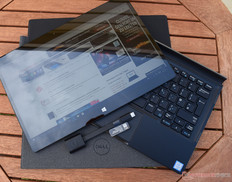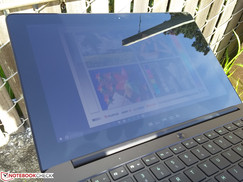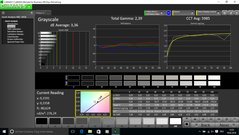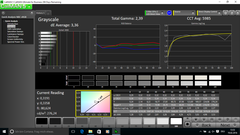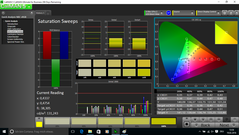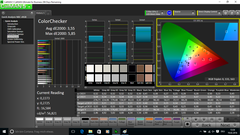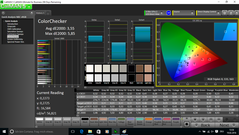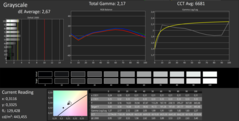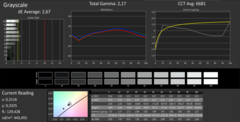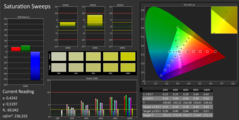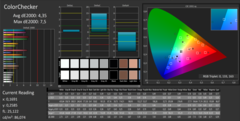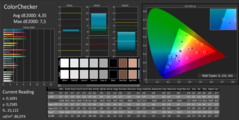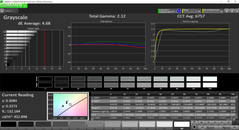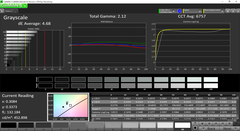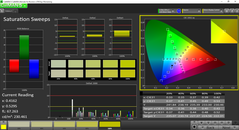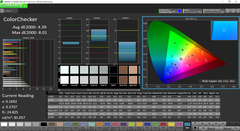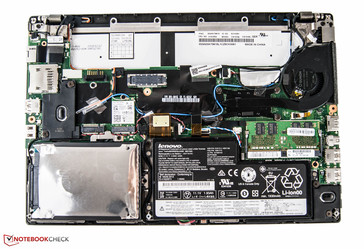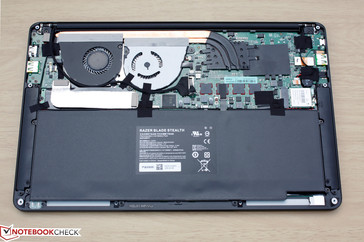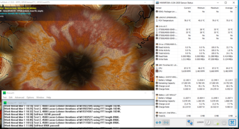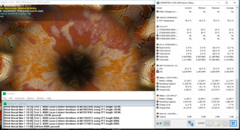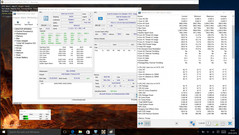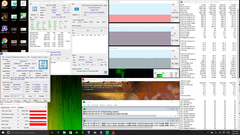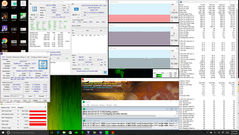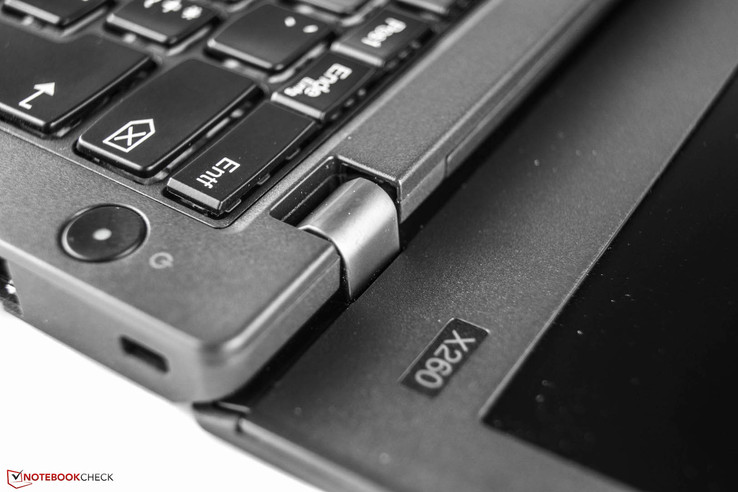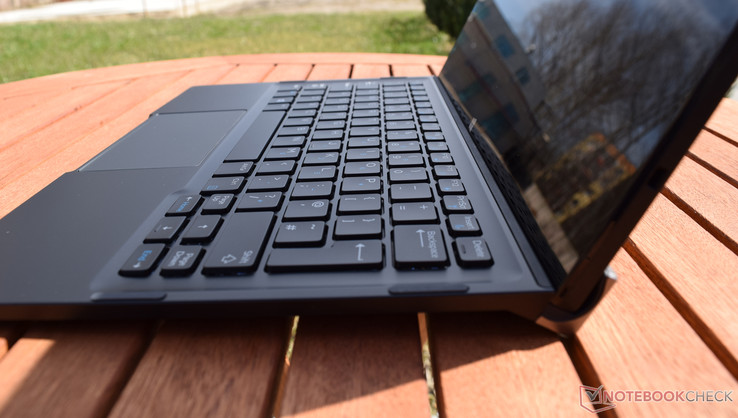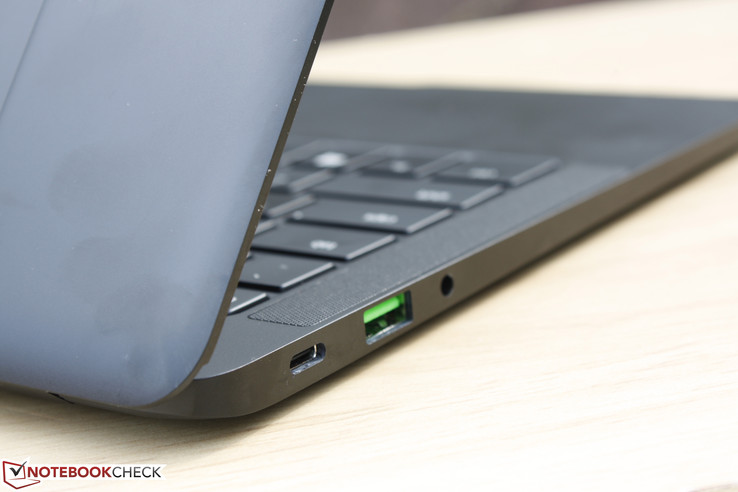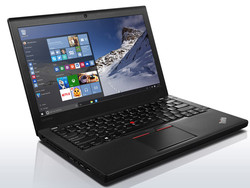Face Off: Lenovo ThinkPad X260 vs. Dell XPS 12 9250 vs. Razer Blade Stealth


Plenty of options are available for notebooks 13 inches or larger, but anything smaller and variety shrinks due to the smaller footprint available for special or auxiliary features. For this Face Off, we pit the 12.5-inch business-oriented ThinkPad X260 against the leaner Razer Blade Stealth and versatile Dell XPS 12 detachable. Each of these three devices serve different markets with unique hardware for an interesting comparison.
We encourage users to check out our dedicated review pages below for more data and detailed analyses of each of the three models. This comparison is by no means a replacement, but a condensed aid for those on the fence.
Case
Construction quality between the three notebooks is excellent all around with high-end materials that we expect no less from based on their high starting prices. The ThinkPad X260, XPS 12, and Blade Stealth utilize rubberized fiberglass, magnesium alloy, and metal, respectively. The Lenovo, however, is the only model that is MIL-STD-810G tested for resistance against humidity, temperature, dust, and other elements to give it the advantage.
The three models exhibit above average rigidity from top to bottom with no critical weak points. Small nitpicks include the imperfect assembly of our X260 test unit (unintended gaps between materials), weaker and fixed keyboard base of the XPS 12, and relatively more flexible chassis of the Blade Stealth.
In terms of size and weight, the Dell is the thinnest (excluding the keyboard base) and is slightly lighter than the Blade Stealth (including the keyboard base). Its fanless design has allowed for a smaller footprint and size than both the Lenovo and Razer notebooks. Unsurprisingly, the Lenovo notebook is the thickest and heaviest. The Blade Stealth is still one of the wider 12.5-inch subnotebooks in terms of width due to its thick display bezel and despite the overall thin profile.
Winner: Lenovo ThinkPad X260
Ports in Comparison
Connectivity
Available ports differ dramatically between the three devices. The Lenovo system is the only one lacking USB Type-C and makes up for it with a handful of traditional ports including mDP, RJ-45, and standard USB 3.0 Type-A ports. Its docking port, SIM slot, and SmartCard reader are especially important as they distinguish the business notebook from consumer Ultrabooks and convertibles.
Meanwhile, the XPS 12 and Blade Stealth are designed to be thin with nearly all ports stripped away excluding USB ports and audio. Fortunately, both models make use of the versatile USB 3.1 Gen. 2 port with integrated Thunderbolt 3 for compatibility with a wide range of adapters.
Winner: Lenovo ThinkPad X260
| Lenovo ThinkPad X260 | Dell XPS 12 9250 | Razer Blade Stealth | |
| USB | 3x USB 3.0 | 2x USB 3.1 Gen. 2 | 2x USB 3.0, 1x USB 3.1 Gen. 2 |
| Video-out | 1x mDP, 1x HDMI | 2x USB 3.1 Gen. 2 | 1x HDMI, 1x USB 3.1 Gen. 2 |
| Other | SD reader, SIM slot (optional), RJ-45, Kensington Lock, SmartCard reader, 3.5 mm audio, Docking port | MicroSD reader, 1x 3.5 mm audio, Noble Lock | 1x 3.5 mm audio |
| Storage Bays | 1x 2.5-inch SATA III | 1x M.2 | 1x M.2 |
Input Devices
The Lenovo and Dell notebooks both have excellent keyboards with firm feedback and adequate travel. While this is somewhat expected from a Lenovo ThinkPad, it was surprising to find a similar experience on the XPS 12 as detachable keyboard bases tend to feel cheaper and softer in comparison.
The Blade Stealth has a much less comfortable keyboard due to its lighter feedback and shallow travel. It's clear that the main draw of the keyboard is its individually backlit RGB keys for virtually unlimited levels of color customization versus just two levels of White backlighting on the Lenovo and Dell.
As for the touchpads, the Razer offers the larger surface area (10.5 x 6.5 cm) followed by the Dell (10.0 x 5.5 cm) and Lenovo (8.7 x 5.3 cm). The dedicated mouse keys and recognizable TrackPoint on the Lenovo all offer a potentially more comfortable experience despite the small touchpad. Meanwhile, the integrated left and right click keys are comparatively more difficult to press on the Razer than the Dell despite its greater surface area. Thus, double-tapping is by far the easier way to go on the Razer.
Winner: Keyboard -- Tie -- Lenovo ThinkPad X260 & Dell XPS 12 9250
Touchpad -- Lenovo ThinkPad X260
Display
The XPS 12 and Blade Stealth carry almost identical 4K UHD panels manufactured by Sharp. Our measured contrast, color, and backlight brightness values are also quite similar between the two systems. Our Razer system, however, oddly exhibited much slower gray-gray response times despite having almost identical Black-White response times as the Dell. The displays are otherwise essentially like-for-like with full sRGB coverage each.
The matte ThinkPad display on our test unit offers a native resolution of just 768p for almost one-third the pixel density. Aside from this obvious disadvantage, the screen also suffers from, less accurate colors, narrower color space (72 percent sRGB), a dimmer backlight, and use of pulse-width modulation for brightness control. Thus, the lower-end 768p panel has more than just a resolution drawback compared to the XPS 12 and Blade Stealth. We can't, however, speak about the higher resolution configurations just yet.
Winner: Dell XPS 12 9250
| Lenovo ThinkPad X260 | Dell XPS 12 9250 | Razer Blade Stealth | |
| Size | 12.5-inch IPS | 12.5-inch IPS | 12.5-inch IPS |
| Native Resolution | 1366 x 768 | 3840 x 2160 | 3840 x 2160 |
| Pixel Density | 125 PPI | 352 PPI | 352 PPI |
| Panel ID | Lenovo LEN40E5 M125NWR3 R0 | Sharp SHP143D | Sharp SHP144D |
| Lenovo ThinkPad X260-20F60041GE | Dell XPS 12 9250 4K | Razer Blade Stealth UHD i7-6500U | |
|---|---|---|---|
| Display | |||
| Display P3 Coverage (%) | 48.19 | 83.9 | 83.7 |
| sRGB Coverage (%) | 72.6 | 99.8 | 99.2 |
| AdobeRGB 1998 Coverage (%) | 49.79 | 98.1 | 97.2 |
| Response Times | |||
| Response Time Grey 50% / Grey 80% * (ms) | 42.8 ? | 36 ? | 63.2 ? |
| Response Time Black / White * (ms) | 27.2 ? | 35 ? | 38 ? |
| PWM Frequency (Hz) | 220 ? | 1000 ? | |
| Screen | |||
| Brightness middle (cd/m²) | 262 | 437 | 415 |
| Brightness (cd/m²) | 251 | 399 | 399 |
| Brightness Distribution (%) | 88 | 81 | 93 |
| Black Level * (cd/m²) | 0.26 | 0.35 | 0.309 |
| Contrast (:1) | 1008 | 1249 | 1343 |
| Colorchecker dE 2000 * | 3.55 | 3.56 | 3.78 |
| Colorchecker dE 2000 max. * | 5.85 | 9.3 | 7.2 |
| Greyscale dE 2000 * | 3.36 | 2.67 | 3.38 |
| Gamma | 2.39 92% | 2.17 101% | 2.23 99% |
| CCT | 5985 109% | 6681 97% | 7329 89% |
| Color Space (Percent of AdobeRGB 1998) (%) | 45.9 | 86 | 85.1 |
| Color Space (Percent of sRGB) (%) | 100 | 99.3 | |
| Total Average (Program / Settings) |
* ... smaller is better
Performance
CPU Performance
Lenovo, Dell, and Razer all offer multiple CPU options beyond what we have here, so this comparison is only between the configurations on hand.
The Core m series was designed for fanless systems such as the XPS 12 and runs at less than one-third of the TDP of the i5-6200U and i7-6500U in the Lenovo and Razer, respectively. Consequently, raw performance from the Dell system is roughly 10 percent slower in single-threaded benchmarks and 30 percent slower in multi-threaded benchmarks according to CineBench R15.
Serviceability is simpler on the Lenovo and Razer compared to the Dell detachable. Nonetheless, the XPS 12 offers two SODIMM slots for expansion compared to just one in the Lenovo and none in the Razer.
See our dedicated CPU pages on the Core i5-6200U, Core m7-6Y75, and Core i7-6500U for more benchmarks and comparisons.
| Lenovo ThinkPad X260 | Dell XPS 12 9250 | Razer Blade Stealth | |
| CPU | 2.3 GHz Core i5-6200U | 1.2 GHz Core m7-6Y75 | 2.5 GHz Core i7-6500U |
| TDP | 15 W | 4.5 W | 15 W |
| RAM | 4 GB DDR4-2133, Single-channel, 1x SODIMM | 8 GB LPDDR3-1600, Dual-channel, 2x SODIMM | 8 GB DDR3, Dual-channel, Soldered |
| GPU | Intel HD Graphics 520 | Intel HD Graphics 515 | Intel HD Graphics 520 |
| Cinebench R11.5 | |
| CPU Single 64Bit (sort by value) | |
| Lenovo ThinkPad X260-20F60041GE | |
| Dell XPS 12 9250 4K | |
| Razer Blade Stealth UHD i7-6500U | |
| CPU Multi 64Bit (sort by value) | |
| Lenovo ThinkPad X260-20F60041GE | |
| Dell XPS 12 9250 4K | |
| Razer Blade Stealth UHD i7-6500U | |
| Cinebench R10 | |
| Rendering Single CPUs 64Bit (sort by value) | |
| Lenovo ThinkPad X260-20F60041GE | |
| Rendering Multiple CPUs 64Bit (sort by value) | |
| Lenovo ThinkPad X260-20F60041GE | |
| wPrime 2.10 | |
| 1024m (sort by value) | |
| Razer Blade Stealth UHD i7-6500U | |
| 32m (sort by value) | |
| Razer Blade Stealth UHD i7-6500U | |
| Super Pi Mod 1.5 XS 32M - 32M (sort by value) | |
| Razer Blade Stealth UHD i7-6500U | |
| 3DMark | |
| 1280x720 offscreen Ice Storm Unlimited Physics (sort by value) | |
| Razer Blade Stealth UHD i7-6500U | |
| 1920x1080 Ice Storm Extreme Physics (sort by value) | |
| Dell XPS 12 9250 4K | |
| Razer Blade Stealth UHD i7-6500U | |
| 1280x720 Cloud Gate Standard Physics (sort by value) | |
| Lenovo ThinkPad X260-20F60041GE | |
| Dell XPS 12 9250 4K | |
| Razer Blade Stealth UHD i7-6500U | |
| 1920x1080 Fire Strike Physics (sort by value) | |
| Lenovo ThinkPad X260-20F60041GE | |
| Dell XPS 12 9250 4K | |
| Razer Blade Stealth UHD i7-6500U | |
| Fire Strike Extreme Physics (sort by value) | |
| Dell XPS 12 9250 4K | |
| Razer Blade Stealth UHD i7-6500U | |
| PCMark 8 | |
| Work Score Accelerated v2 (sort by value) | |
| Lenovo ThinkPad X260-20F60041GE | |
| Dell XPS 12 9250 4K | |
| Razer Blade Stealth UHD i7-6500U | |
| Creative Score Accelerated v2 (sort by value) | |
| Lenovo ThinkPad X260-20F60041GE | |
| Dell XPS 12 9250 4K | |
| Razer Blade Stealth UHD i7-6500U | |
| Home Score Accelerated v2 (sort by value) | |
| Lenovo ThinkPad X260-20F60041GE | |
| Dell XPS 12 9250 4K | |
| Razer Blade Stealth UHD i7-6500U | |
| X264 HD Benchmark 4.0 | |
| Pass 1 (sort by value) | |
| Razer Blade Stealth UHD i7-6500U | |
| Pass 2 (sort by value) | |
| Razer Blade Stealth UHD i7-6500U | |
* ... smaller is better
GPU Performance
The Razer Blade consistently outperforms the Lenovo and Dell in raw GPU benchmarks despite carrying the same HD Graphics 520 GPU as the Lenovo. Like the older generation of Intel HD graphics, the HD 520 is designed to be scalable between various Core ix CPUs. Fire Strike Graphics shows Lenovo and Razer to be about 20 percent and 40 percent ahead of the HD Graphics 515, respectively, in the Dell detachable. The graphical power between them is still far too limiting for modern 3D titles save for less demanding RTS games like LoL or Starcraft II.
See our dedicated GPU pages on the Intel HD Graphics 520 and HD Graphics 515 for more benchmarks and comparisons.
| Cinebench R15 - OpenGL 64Bit (sort by value) | |
| Lenovo ThinkPad X260-20F60041GE | |
| Dell XPS 12 9250 4K | |
| Razer Blade Stealth UHD i7-6500U | |
| 3DMark | |
| 1280x720 offscreen Ice Storm Unlimited Graphics Score (sort by value) | |
| Razer Blade Stealth UHD i7-6500U | |
| 1920x1080 Ice Storm Extreme Graphics (sort by value) | |
| Dell XPS 12 9250 4K | |
| Razer Blade Stealth UHD i7-6500U | |
| 1280x720 Cloud Gate Standard Graphics (sort by value) | |
| Lenovo ThinkPad X260-20F60041GE | |
| Dell XPS 12 9250 4K | |
| Razer Blade Stealth UHD i7-6500U | |
| 1920x1080 Fire Strike Graphics (sort by value) | |
| Lenovo ThinkPad X260-20F60041GE | |
| Dell XPS 12 9250 4K | |
| Razer Blade Stealth UHD i7-6500U | |
| Fire Strike Extreme Graphics (sort by value) | |
| Dell XPS 12 9250 4K | |
| Razer Blade Stealth UHD i7-6500U | |
| 3DMark 11 - 1280x720 Performance GPU (sort by value) | |
| Lenovo ThinkPad X260-20F60041GE | |
| Dell XPS 12 9250 4K | |
| Razer Blade Stealth UHD i7-6500U | |
Stress Test
To test system stability, we run both Prime95 and FurMark to simulate maximum stress. These unrealistic conditions do not represent daily workloads, but are instead meant to put both the CPU and GPU at 100 percent capacity.
All systems throttle when subjected to such extreme workloads with the Dell system struggling the most and at lower stable clock rates for both the CPU and integrated GPU. The Lenovo system stabilizes at the warmest core temperature of about 87 C compared to 82 C and 83 C for the Dell and Razer, respectively.
Unfortunately, our Lenovo editor makes no mention of the stable GPU clock rate, so we cannot compare its overall performance against the other two models. No system was observed to throttle when under gaming loads.
Winner: Razer Blade Stealth
| Lenovo ThinkPad X260 | Dell XPS 12 9250 | Razer Blade Stealth | |
| Rated GPU Core Clock (MHz) | 300 | 300 | 300 |
| Stable GPU Core Clock on FurMark (MHz) | -- | 550 | 850 |
| Rated CPU Core Clock (GHz) | 2.3 | 1.2 | 2.5 |
| Stable CPU Core Clock on Prime95 (GHz) | 1.4 | 0.9 - 1.0 | 1.4 |
| Average CPU temperature | 87 C | 82 C | 83 C |
Emissions
System Noise & Temperature
As expected, the thinner and more powerful system runs louder and warmer than its two competitors. All three devices run silently when idling or under low loads with the Razer having a much louder maximum when under extreme Prime95+FurMark stress. When gaming, however, the Razer system is really no louder than the Lenovo at the cost of warmer surface temperatures. Thus, the thicker ThinkPad X260 is both the quieter and cooler notebook compared to the Blade Stealth.
The Dell convertible utilizes no active cooling solution in comparison. Nonetheless, its surfaces can be warmer than the Lenovo when running heavier processing loads.
Winner: Lenovo ThinkPad X260
| Lenovo ThinkPad X260 | Dell XPS 12 9250 | Razer Blade Stealth | |
| Fan Noise when idling | 29.4 dB(A) | -- dB(A) | 29.3 dB(A) |
| Fan Noise under high loads | 33.2 dB(A) | -- dB(A) | 33.1 - 38.8 dB(A) |
| Average surface temperature when idling | 27.5 C | 29.3 C | 26.7 C |
| Average surface temperature under high loads | 31.8 C | 37.9 C | 38.2 C |
| Ambient temperature | 20.2 C | 21.6 C | 21.5 C |
Battery Life
The Lenovo system can run for over two hours longer than both the Dell and Razer. This is especially disappointing for the Razer considering that its battery capacity is almost as large as the Lenovo and almost twice that of the Dell while still coming out the shortest in terms of overall runtimes.
It's worth noting that all three notebooks sport non-removable internal battery packs. In the case of our ThinkPad X260 test unit, the internal 3-cell battery pack is just 23 Wh with optional 23 Wh or 48 Wh secondary external options. Thus, our Lenovo runtimes below are reflective of the internal 23 Wh primary battery plus external 23 Wh secondary battery. The Lenovo data would have been halved had we performed the tests with the internal battery pack only.
Winner: Lenovo ThinkPad X260
| Lenovo ThinkPad X260-20F60041GE 46 Wh | Dell XPS 12 9250 4K 28 Wh | Razer Blade Stealth UHD i7-6500U 45 Wh | |
|---|---|---|---|
| Battery runtime | |||
| Reader / Idle (h) | 13.3 | 6.2 | 7.3 |
| WiFi v1.3 (h) | 6.6 | 4.1 | 3.8 |
| Load (h) | 2.7 | 1.6 | 1.3 |
Verdict
Pushing the limits on how thin a 12.5-inch notebook can be will net you the Blade Stealth or even the detachable XPS 12 if on a fanless design. Both devices clearly lack the connectivity options as found on the ThinkPad X260, but the versatile USB Type-C Gen. 2 ports should ensure better compatibility with adapters for the right occasion. The Dell DA200 adapter, for example, provides VGA, HDMI, USB 3.0, and RJ-45 all through a single USB Type-C Gen. 2 port.
The Lenovo offers a healthy number of options without the use of any adapters, though it notably lacks USB Type-C for what could have been better future-proofing. Its 768p display is somewhat disappointing and it is of course thicker and heavier than the other two models. Surprisingly, the Blade Stealth still carries the larger footprint despite having far fewer options than the Lenovo.
The ThinkPad X260 is still the better option for travel and work. Its slight disadvantages in weight and thickness are well offset by its innate set of features and familiar Chiclet keyboard. A higher resolution panel is definitely recommended for the added clarity and screen real estate.
| Lenovo ThinkPad X260 | Dell XPS 12 9250 | Razer Blade Stealth |
|---|---|---|
+ Fiberglass chassis; MIL-STD-810G certification + Comfortable keyboard + More connectivity features and options; Docking port, optional SIM slot + Secondary battery options | + Magnesium alloy chassis + Complete sRGB + Comfortable keyboard + 2x SODIMM slots, 2x USB Type-C Gen. 2 ports + Lightweight, thin, fanless design | + Metal chassis + Complete sRGB coverage + Lightweight, thin + Individually lit RGB keyboard |
- Dimmer 1366 x 768 resolution panel; Narrower sRGB color coverage - Warmer CPU temperatures when under load - Heavier and thicker | - Less accessible internals - Fewer connectivity options - Weaker CPU and GPU performances - Comparatively weaker keyboard base | - Fewer connectivity options; No SD reader - Wider in width - Slightly more flexible chassis - Non-expandable RAM - Potentially louder fan noise - Shorter runtimes - Less comfortable keyboard; Limited travel and feedback |
Lenovo ThinkPad X260
Price comparison
Dell XPS 12 9250
Price comparison
Razer Blade Stealth
Price comparison
See more quick comparisons in our Face Off series:
- Dell XPS 15 vs. Apple MacBook Pro 15 vs. Asus ZenBook Pro UX501
- Aorus X3 Plus vs. Gigabyte P34W vs. Razer Blade 14
- Dell XPS 13 vs. Apple MacBook Pro 13 vs. Asus ZenBook UX305
- HP EliteBook 820 G2 vs. Lenovo ThinkPad X250 vs. Dell Latitude 12 E7250
- Asus ROG G751 vs. Dell Alienware 17 vs. MSI GT72 Dominator
- Lenovo ThinkPad T450 vs. Acer TravelMate P645 vs. Dell Latitude 14 E5450
- Dell Alienware 15 vs. Clevo P751ZM vs. MSI GE62
- Acer Aspire V17 Nitro vs. Asus N751 vs. HP Envy 17
- Samsung Galaxy Tab S 8.4 vs. Sony Xperia Z3 Compact vs. Dell Venue 8 7000
- Asus EeeBook X205TA vs. Lenovo S20 vs. Acer Aspire ES1
- Microsoft Surface Pro 3 vs. Asus Transformer Book T300 Chi vs. Toshiba Portege Z20t
- Lenovo ThinkPad Edge E550 vs. Acer Aspire E5 vs. HP ProBook 450 G2
- HP Pavilion 15 vs. Lenovo IdeaPad Z50 vs. Toshiba Satellite S50
- Apple MacBook Air 13 2015 vs. Samsung ATIV Book 9 900X3G vs. Asus ZenBook UX303
- Asus ROG G501 vs. Lenovo Y50 vs. Acer Aspire V15 Nitro
- OnePlus 2 vs. Honor 6 Plus vs. Motorola Moto X Play
- Lenovo Yoga 500 vs. Dell Inspiron 15 7000 vs. Toshiba Satellite Radius 15
- Apple iPhone 6S Plus vs. Huawei Mate S vs. LG G4
- Dell Inspiron 15 5558 vs. Lenovo Z51 vs. Acer Aspire V3 574G
- MSI GT72S vs. Asus G752 vs. Clevo P870DM
- Microsoft Surface Book vs. Dell XPS 13 InfinityEdge vs. Apple MacBook Pro Retina 13
- Microsoft Surface Pro 4 Core i7 vs. Surface Pro 4 Core i5 vs. Surface Pro 4 Core m3
- Lenovo Yoga 900 vs. HP Spectre x360 13 vs. Dell Inspiron 13 7348
- Lenovo ThinkPad T450s vs. HP EliteBook Folio 1040 G2 vs. Dell Latitude 14 E7450
- Asus GL552JX vs. Acer Aspire V15 Nitro VN7 vs. MSI GP62 2QE
- MSI WT72 vs. Lenovo ThinkPad P70 vs. HP ZBook 17 G2
- Microsoft Surface Pro 4 vs. HP Spectre x2 12 vs. Fujitsu Stylistic Q665
- Dell XPS 13 9350 vs. XPS 13 9343 vs. XPS 13 9333
- Lenovo Ideapad Y700 15ISK vs. Gigabyte P55W v5 vs. Dell XPS 15 9550




